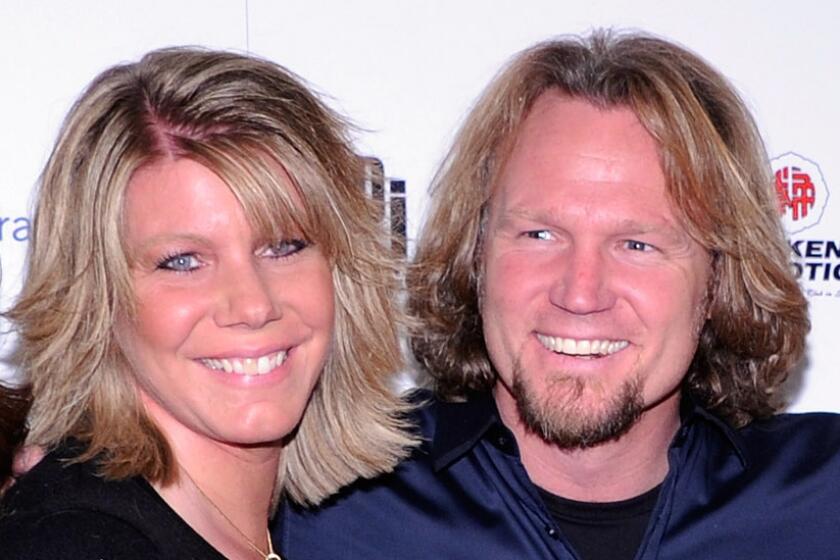REBIRTH OF THE BLUES IS DOING FINE
- Share via
Like the theater, jazz seems to thrive on poor health. The more you hear that it is falling behind in the Great Race with rock and other electrified pleasures, the more evidence you find that jazz flourishes as an art form and that those who love it still gather like true believers to do homage.
Thursday night I fell by Donte’s (why is it there seems no other really appropriate way to say you went to a jazz club, even though you didn’t stumble, let alone fall?). The attraction was trumpeter Conte Candoli and his quartet, also known as the Thursday Night Band.
The crowd was not a throng, but it was attentive, appreciative and knowledgeable, with timely and enthusiastic shouts for the leader and his sidemen, drummer Roy McCurdy, pianist Ross Tompkins and bassist Leroy Vinnegar.
Vinnegar I remember as one of the Andre Previn trio, with the late Shelly Manne on drums, making those classic cool jazz versions of the scores of “My Fair Lady” and “Bells Are Ringing.” Vinnegar still plays a bass that does not walk so much as run, producing a brisk and dazzling cascade of single notes that’s thrilling to hear.
There is another school of bass-playing that leans to sporadic and meditative plucking, mixed with long, swooping slides that suggest a kazoo being played at the wrong speed. I am with Mr. Vinnegar.
Toward evening’s end Candoli’s brother Pete, who blows equally fine trumpet and is Mishiwaka’s (Indiana) other gift to jazz, joined in for a couple of numbers. They have to be the most admirable brother act since the Smiths joined to attack the common cough.
They did rip-roaring duets they had obviously executed many a time before, with circus-tempo runs in close harmony, a kind of precision flying, combined with chase choruses in which the brothers seemed to be trying to inspire rather than defeat each other. Even at breakneck speed, the effect was curiously affecting, and the fraternal affection and pride and their sheer pleasure in the playing could be sensed in every note.
The brothers’ styles are comparable but not identical. Both are what you might call Stan Kenton modernists, although Pete favors a brilliant, open and hard-charging attack. Conte, not less hard-charging, leans additionally toward muted and half-valve tones that even at high velocity have a sort of meditative quality.
Those who prefer the sounds of bop and beyond do not always listen tolerantly to jazz of the Creole-to-Condon vintage. Yet it seems uniquely characteristic of jazz that its whole history exists in performance all the time.
The annual Memorial Day weekend traditional jazz festival in Sacramento will draw more than 100,000 of the faithful to hear 100 bands from the United States and abroad. The Labor Day trad jazz festival in Los Angeles is anticipating its largest crowds yet in September.
Recordings come my way from time to time that further suggest the range of jazz-flavored pleasures in current supply. The fine jazz balladeer Ruth Olay has a new album, “Watch What Happens. . .” on Herschel Burke Gilbert’s Laurel label (LR-502).
Backed by Graham Young on trumpet, with Jimmy Rowles and Gerald Wiggins Sr. alternating on piano and Red Mitchell and Red Callendar on bass, Olay does a dozen up-tempo and down-tempo standards. At any speed the voice is clear, supple, warm and affecting, and the jump tunes jump with a trumpet-like verve.
Evoking another era entirely, the young UC San Diego scholar-teacher who doubles as a blues shouter, Chris Norris, is featured on a new album, called “Young Woman’s Blues,” with Pasadena’s Golden Eagle Jazz Band led by Dick Shooshan (Stomp Off label, SOS 1100). The title song is by Bessie Smith and there are also a couple by Ma Rainey (“Titanic Man Blues” and “Misery Blues”). They are Norris’ idols, respectfully saluted.
What is impressive is that Norris, who is white and studied opera (as a soprano) in her native Seattle before she switched to comparative literature, women’s studies and the blues, sings these old, hard 12-bar anthems with a deep-voiced fidelity not only to the sound but to the felt intensity of spirit of the originals.
Much of the re-created Dixieland now in vogue is, unapologetically, just ricky-tick good fun. But the best and bluesiest of it, as in the Norris vocals, reminds you yet again that the music came out of a particular and difficult life experience.
There’s a wonderful line, said by Joe Seneca in the new film “Crossroads”: “The blues ain’t nothing’ but a good man feelin’ bad.” Jazz, you might well add, is now, as it ever was, the most potent medicine there is for lifting the spirit.
More to Read
The biggest entertainment stories
Get our big stories about Hollywood, film, television, music, arts, culture and more right in your inbox as soon as they publish.
You may occasionally receive promotional content from the Los Angeles Times.










